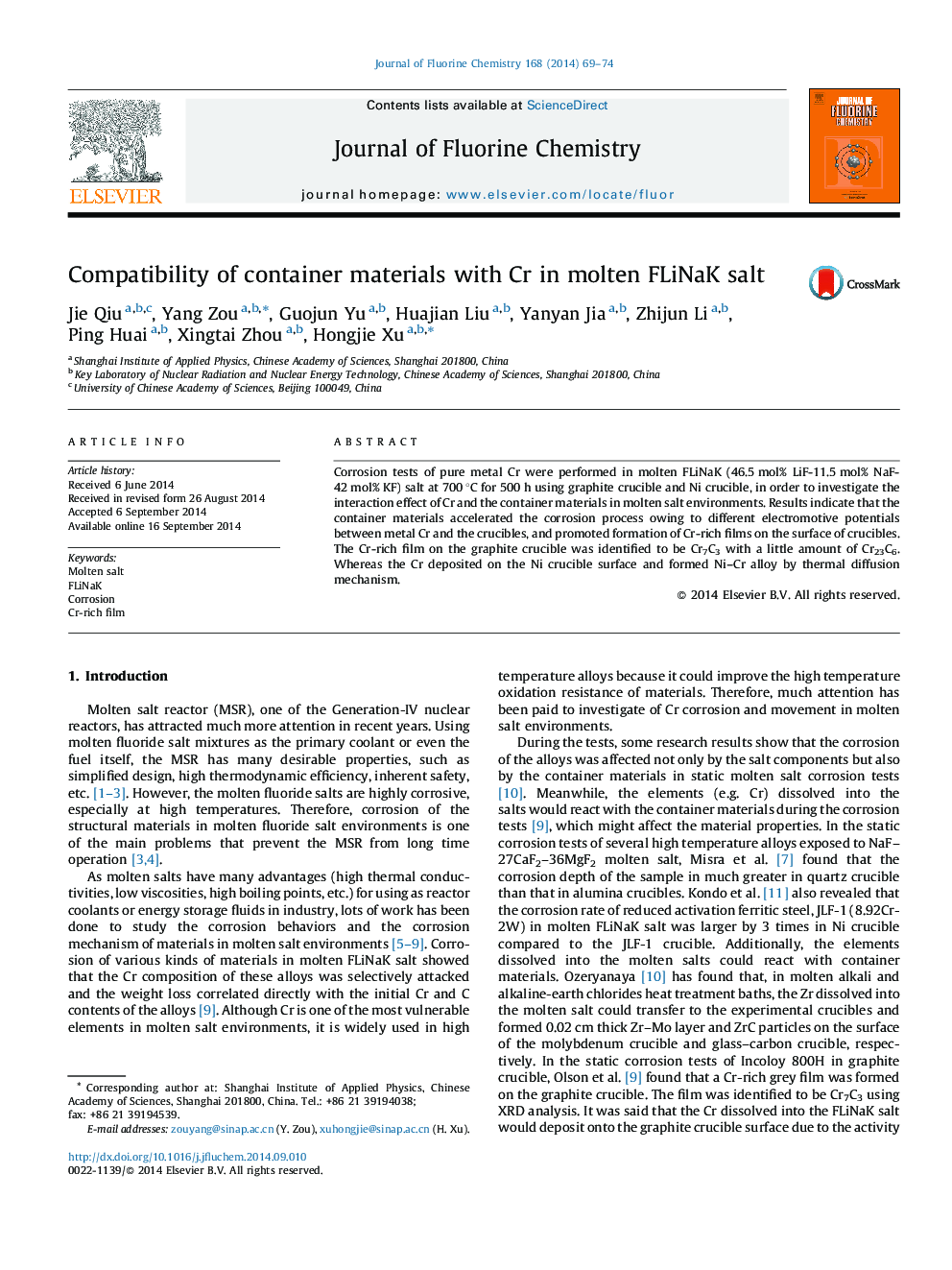| Article ID | Journal | Published Year | Pages | File Type |
|---|---|---|---|---|
| 1313803 | Journal of Fluorine Chemistry | 2014 | 6 Pages |
•Interaction effect of Cr and the container materials in molten FLiNaK salt.•Cr dissolved in molten FLiNaK salt would deposit on the surface of the crucibles and form Cr-rich films.•The Cr-rich film on the graphite crucible was identified to be Cr7C3 with a little amount of Cr23C6.•Cr deposited on the Ni crucible surface would form Ni–Cr alloy by thermal diffusion mechanism.
Corrosion tests of pure metal Cr were performed in molten FLiNaK (46.5 mol% LiF-11.5 mol% NaF-42 mol% KF) salt at 700 °C for 500 h using graphite crucible and Ni crucible, in order to investigate the interaction effect of Cr and the container materials in molten salt environments. Results indicate that the container materials accelerated the corrosion process owing to different electromotive potentials between metal Cr and the crucibles, and promoted formation of Cr-rich films on the surface of crucibles. The Cr-rich film on the graphite crucible was identified to be Cr7C3 with a little amount of Cr23C6. Whereas the Cr deposited on the Ni crucible surface and formed Ni–Cr alloy by thermal diffusion mechanism.
Graphical abstractCorrosion tests of pure metal Cr were performed in molten FLiNaK (46.5 mol% LiF-11.5 mol% NaF-42 mol% KF) salt using graphite crucible and Ni crucible in order to study the interaction effect of Cr and the container materials in molten salt environments.Figure optionsDownload full-size imageDownload as PowerPoint slide
